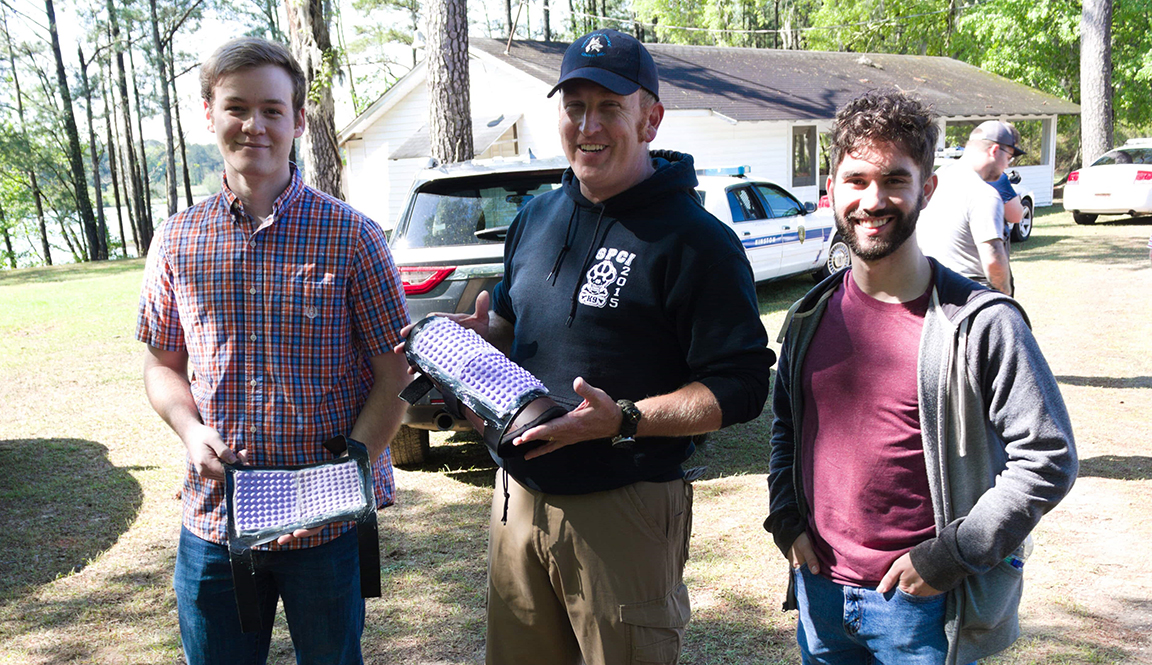A senior design team from the Campbell University School of Engineering successfully demonstrated a “bleeding” dog-bite sleeve for K-9 training by police and military units.
The team travelled to Kinston earlier this semester to test and demonstrate their prototype bite sleeve with the Kinston Police Department. The team of seniors Don Bleyl, Jacob Freeman, Brandon Johnson, Taylor Rothe and William Strader developed a thin, durable bite sleeve that can produce a blood stimulant when bitten into. The goal was to provide a more realistic encounter for K-9 unit dogs during training.
They were sponsored by the Army Research Laboratory and led by engineering External Advisory Board members Stephen Lee, senior scientist for the Army Research Office, and Brandon Conover, CEO of Practical Scientific Solutions, Inc.
“The problem for training K-9 unit dogs is that current sleeves are very bulky and, if pierced, provide no indication that the assailant might bleed,” said Kim Fowler, associate professor engineering. “When newly-trained dogs do encounter assailants, they tend to release hold quickly because a human arm is different than the bulky, dry training sleeves.”
The team started development of the dog-bite sleeve back in August. The sleeve performed flawlessly in the demonstration in Kinston. It is thin and light, but still provided excellent protection to the training officer.
The sleeve design was one of the industry-supported hands-on capstone projects for Campbell engineering students taking ENGR 491 and 492. The Senior Design Sequence emulates a professional business environment where students are assigned to projects according to their professional interests and markets that they will pursue. Meeting regularly with industry sponsors, students learn the basics of project management and systems engineering as they demonstrate effective communication and problem-solving through their Conceptual Design Review along with Project Plan, Architecture and Requirements, Analysis, and Test Plans in the first semester.
The students develop their prototypes and present a Preliminary Design Review and a Critical Design Review in the spring, prior to the final document deliverables including design descriptions, test results and user manuals.


